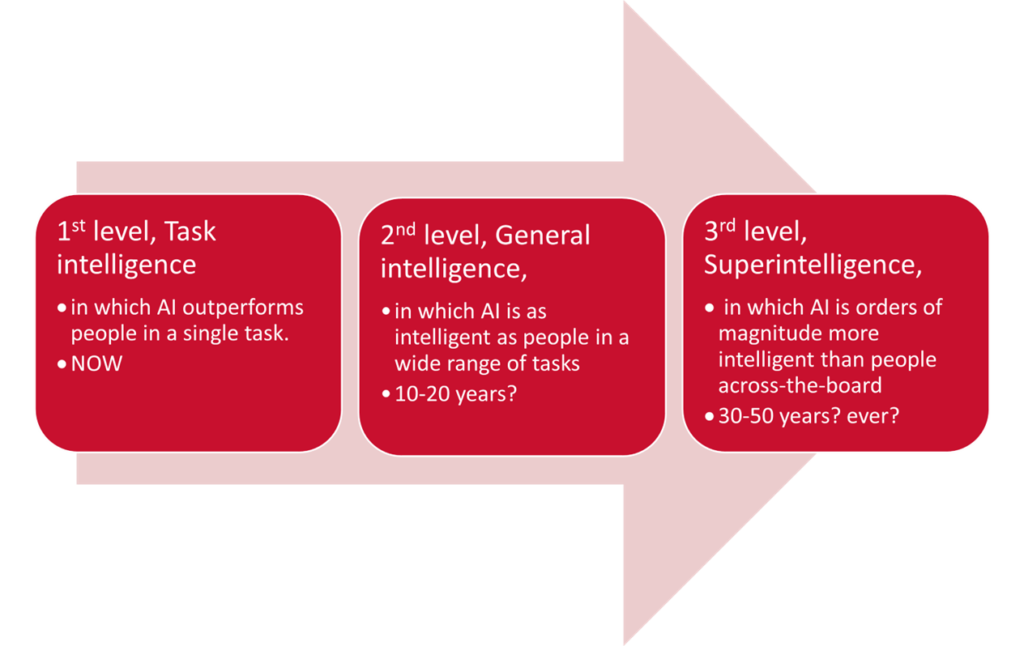The second in our series of seven key drivers influencing the move to After Capitalism is technology acceleration.
Technological capabilities continue to increase rapidly, often exponentially, in a wide range of sectors.
In short, technology will save us. Lest ye skeptics are about to click away, hang in there. It is plausible! Proponents have a lot of ammunition – a scan of potential technological breakthroughs can leave one’s head spinning. They believe that technology will create a world of unprecedented abundance – Diamandis is an influential proponent with a series of books and co-founded the Singularity Institute and the X-Prize in his pursuit of abundance. For our purposes, acceleration leads to abundance and would be a key enabler of After Capitalism. Let’s suspend any disbelief for now.
At the heart of this driver is Kurzweil’s Law of Accelerating Returns that points out that technological change is exponential. Most people think of it as linear and thus underestimate the long-term gains in capabilities. But Kurzweil sees its potential for not only solving many of the world’s pressing problems.
When we apply the law of accelerating returns to a suite of digital transformation technologies — with AI, ER (extended reality), IoT, big data, predictive analytics among the leading examples — extraordinary things happen. While the capabilities of the individual technologies are fascinating by themselves, they are increasingly being integrated, which is where the really transformative capabilities arrive. For instance, the digital transformation technologies complement and enhance what people can do. With extended reality tools, for instance, human capabilities are extended by assistance from augmented and virtual reality.

AI, today’s pinup topic, is perhaps the most influential of the suite of digital transformation technologies. Bostrom (in his excellent Superintelligence) provides a handy guide for categorizing AI in three levels and gives us a rough roadmap.
Where this driver gets a little “tricky” is imagining just how far it goes.
Kurzweil talks about enabling the uploading of human consciousness to computers, and goes all the way to reinventing the human species itself. A key integration is the digital with the biological, such that I/T with bio/nano/robo can repair and eventually enhance human performance. This could lead to a future where distinction between humans and technology essentially disappears. Harari’s Homo Deus also projects the emergence of new species from these technologies.
To keep this brief, we won’t even talk about acceleration in all aspects of technology, in areas such as additive manufacturing, blockchain, renewable energy, advanced transportation, space, etc., etc.
One might say the key question is of the motivation behind the application of the accelerating technology. So, while on the one hand technology acceleration is currently driving the capitalist regime, on the other, it may drive it so well that the capitalist regime is no longer needed. Capitalism is based on the assumption of a scarcity of resources. Technology acceleration, however, could “solve” that scarcity issue and enable an abundance of resources that makes capitalism obsolete. For Tech-Led Abundance, we assume the latter. – Andy Hines

technological acceleration is breathtaking. Implementation of technology and adjacent infrastructure moves at the speed of humans, and only moves faster than technology regulation… and as you know Andy, doesn’t happen globally all at once, but instead crosses the globe like ripples on a pond.